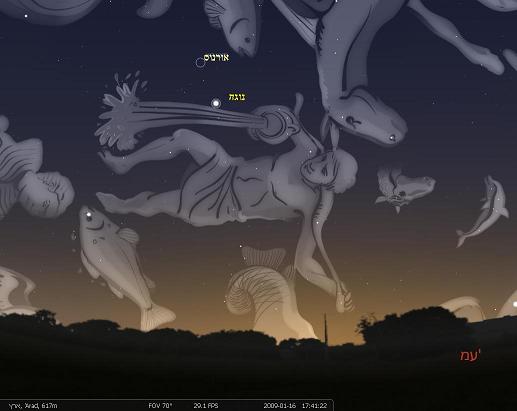As usual, when the International Space Station passes over Earth while it is still illuminated but it is already dark on the ground, it is a great opportunity to watch it appear as a fast-moving star in the sky

An hour and a half after sunset the surface of the earth has already darkened, but the space station, the shuttle, the Hubble Space Telescope and several other satellites are still in the sunlight, for this reason we can look up and see them as points of light moving in the evening sky. The International Space Station, a joint project of space agencies from several countries, primarily the USA and Russia, is the most prominent and its brightness is sometimes greater than that of Venus or Jupiter. The space station is so bright because of its solar panels, their vast area reflects much of the sunlight back to Earth and we see a moving point of light in space.
The same spacecrafts that can be seen are in an orbit called LEO (low earth orbit), a relatively low orbit around the earth at a height of about 200-600 km above the surface. Their speed is about 8 km per second. This speed is so high that a centrifugal force is created that opposes the Earth's gravity. The speed of their movement is such that a complete circle around the earth takes only an hour and a half! Sometimes you can see two consecutive passes of the space station, the Hubble or the shuttle in the same evening. The direction of movement of those spacecraft will usually be from west to east - against the direction of the earth's movement, the duration of each passage is about 5 minutes.
To observe spacecraft passages you have to go to a place that is not lit, although the space station passages are usually very bright and can be seen even in lit places. According to the information provided on the heavens-above website and summarized in the table, you must look in the direction in which the spacecraft or satellite will appear. It is recommended to leave a few minutes earlier and sometimes you have to wait a few more minutes for the spaceships to appear. Of course, clouds or heavy haze may interfere or prevent us from seeing the spacecraft passages. All times and directions in the tables are shown according to winter time in Israel for a viewer located in Beer Sheva.
In the coming days it will be possible to view the International Space Station at the following times and directions:
Date Time Direction Appearance Brightness Notes
15/01 17:48 Wed Wed 1.1- Towards the end the station will pass through Orion's Belt
16/01 18:14 p.m. Wed Wed 1.6- the beginning of the passage under the Venus
17/01 17:05 Wed Wed Grade 1.3- A long and beautiful transition
18/01 17:31 p.m. Wed Wed 1.3- the beginning of the passage under the Venus
These days not only spaceships are chasing us but also missiles. In light of the directives of the Home Front Command, the Ilan Ramon Center for Youth Seeking Physics is closed these days. After the return to routine, we will start holding astronomical nights at the Ilan Ramon Center, every week the general public is invited for a visit that includes an observation*, a lecture and a visit to the planetarium. More information about the astronomical nights can be found In this link.

And more from the Ilan Ramon Center. The stellarium software was partially translated into Hebrew with the help of the Ilan Ramon Center team, it can be downloaded for free. The software presents the night sky in a fascinating way and allows us to find out where we have to look to see the constellations and even the planets. We will start the observation evening with Nega (which cannot be missed in the southwest direction), and when it gets dark in the southeast direction we will continue to the Orion constellation. From Orion you can continue to find plenty of winter groups, the Taurus above Orion, the Gemini to the north of it and below Orion's belt shines Sirius - the brightest star in the night sky. To get you started, here's an example of a night sky image from the software:
After a basic orientation in the night sky we will use the heavens-above website. This website is a great tool for astronomy and space enthusiasts and through it (with the hope of some good weather) we will be able to know when and where we can watch impressive transits of the International Space Station, the Hubble Space Telescope and other "royal satellites".
Registration for a visit to the Ilan Ramon Center for Physics-seeking youth via phone number: 08-6652068
Additional astronomical information can be obtained on the website of Ilan Ramon Center for Youth Seeking Physics /
Additional details about satellite crossings are available find on the site The data in this article was taken from him
Amir Barnett is an instructor at the Beit Tasif Astronomy Center and at the Ilan Ramon Center for physics-seeking youth, a member of the Israel Astronomy Society.

One response
Hello Amir,
At the end of the second paragraph you write that the direction of movement of the space station is opposite to the direction of rotation
Earth.
It is true that the direction of movement is from west to east, just like the earth.
Best regards
Doron